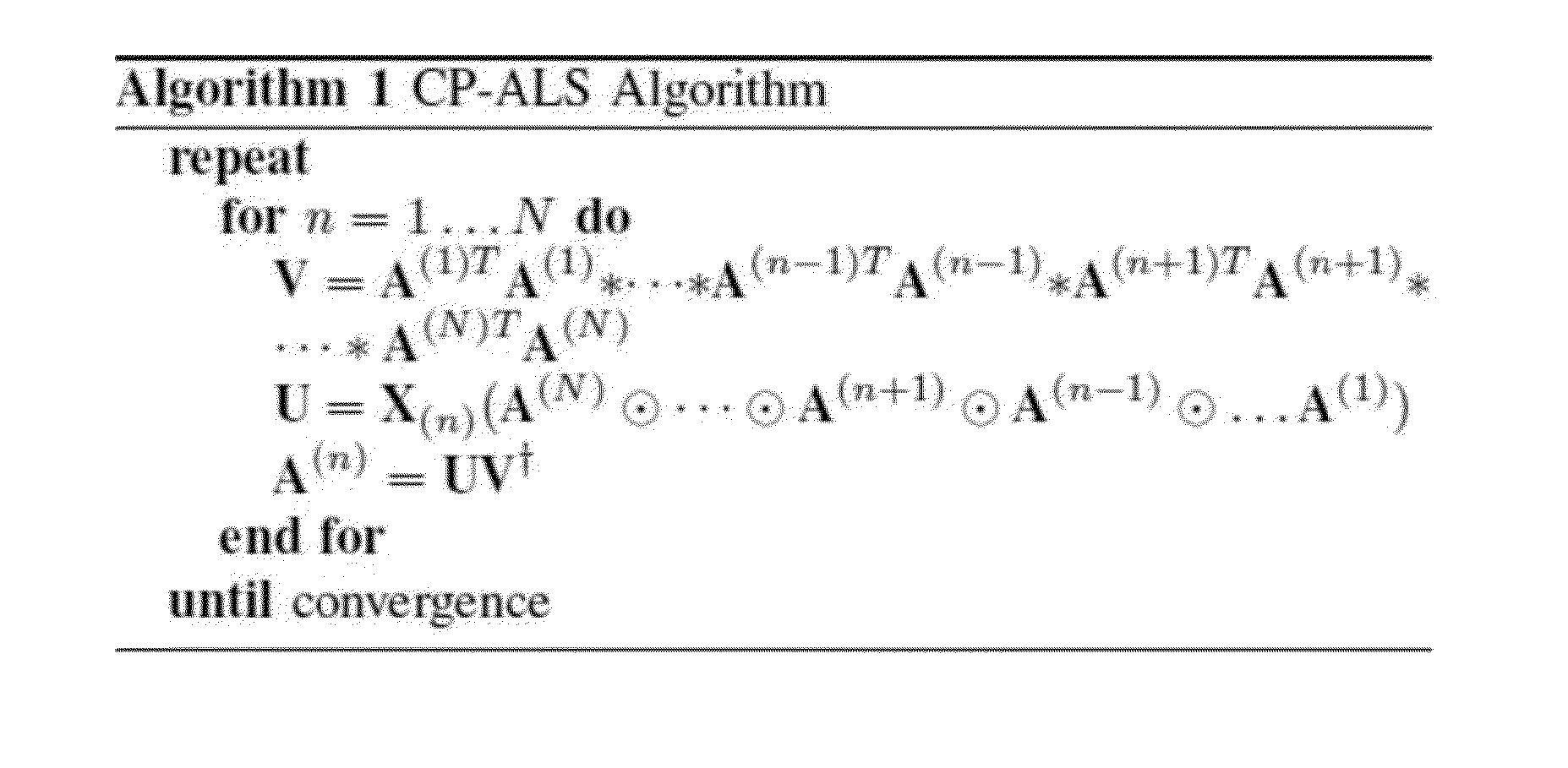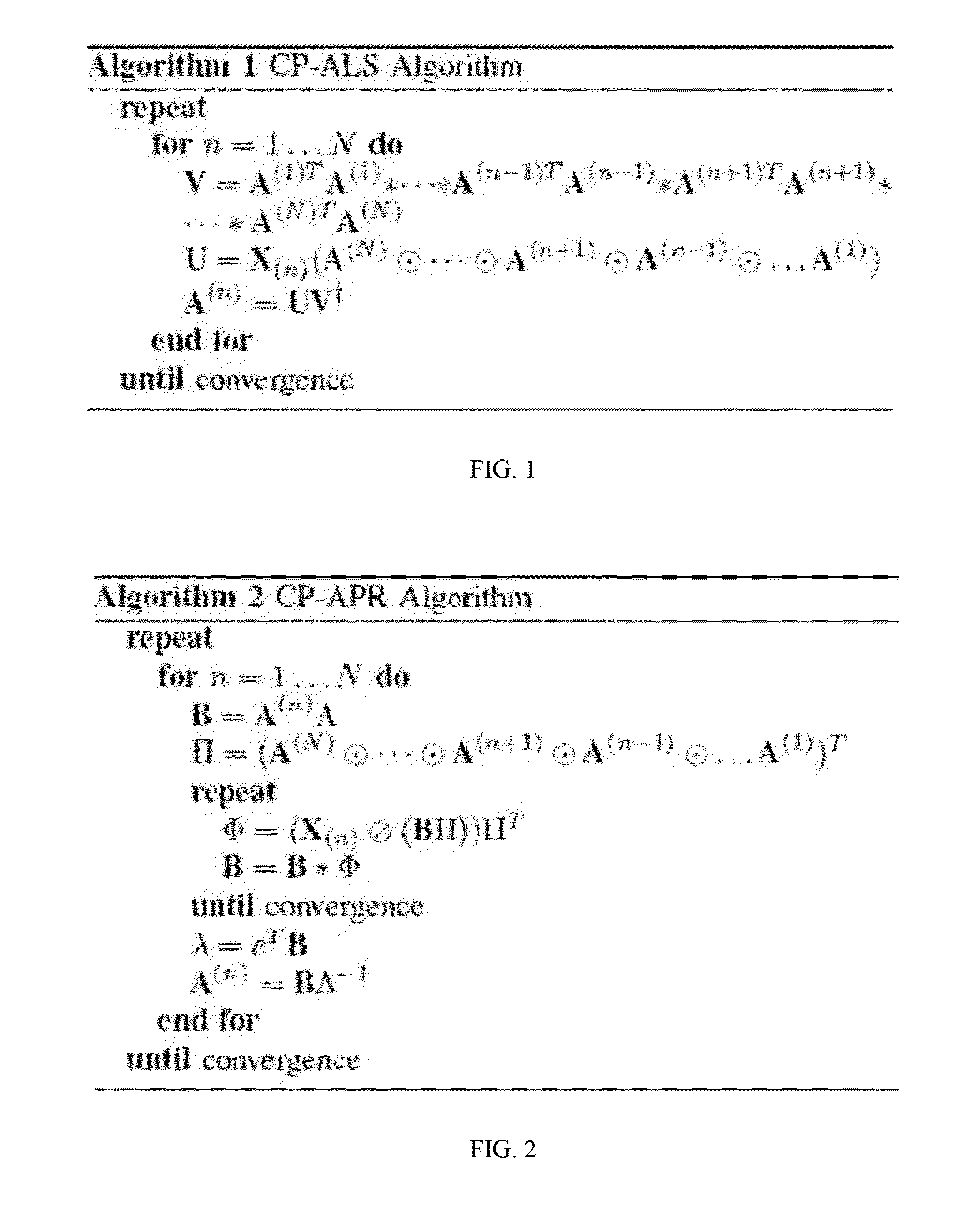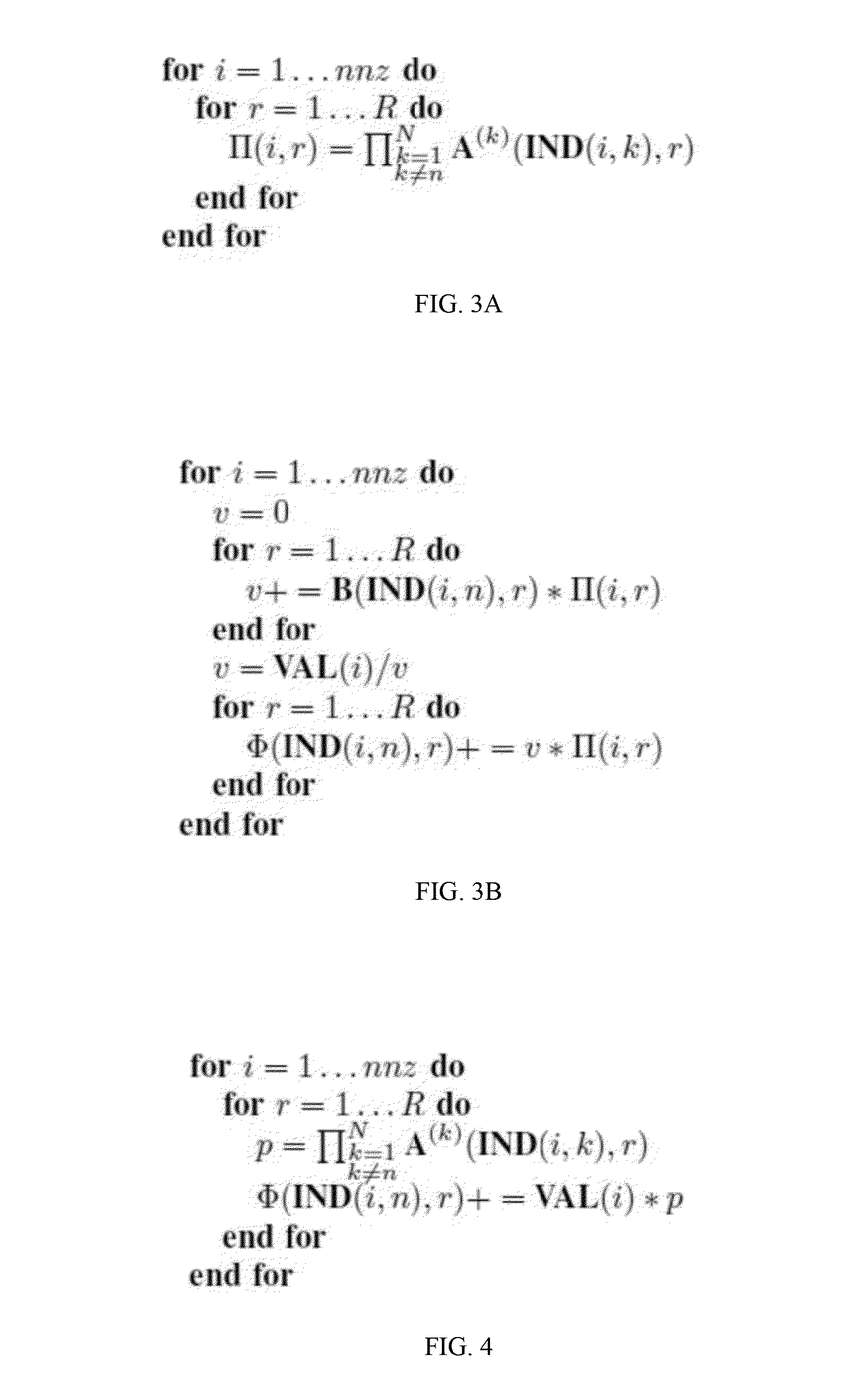Systems and methods for parallelizing and optimizing sparse tensor computations
- Summary
- Abstract
- Description
- Claims
- Application Information
AI Technical Summary
Benefits of technology
Problems solved by technology
Method used
Image
Examples
Embodiment Construction
[0079]The following techniques can address various challenges in optimizing sparse tensor computation. These techniques include one or more of: (i) identifying and extracting more concurrency; (ii) reducing barrier synchronizations or thread waits; (iii) improving data locality; (iv) improving load balance among processors; and (v) reducing parallelization overheads such as the task scheduling overhead.
[0080]Identifying and Extracting Parallelism: Tensor computations such as the tensor decomposition methods may involve complex data dependencies within the algorithm that make the task of exploiting concurrency a challenging one. Among the various possible concurrency or parallelism patterns, some of the most prevalent ones in sparse tensor computations include: 1) presence of parallelism to compute independent partial results from non-zeroes of input data and a reduction of the partial results after an all-to-all barrier synchronization among all processors, 2) presence of parallelis...
PUM
 Login to View More
Login to View More Abstract
Description
Claims
Application Information
 Login to View More
Login to View More - R&D
- Intellectual Property
- Life Sciences
- Materials
- Tech Scout
- Unparalleled Data Quality
- Higher Quality Content
- 60% Fewer Hallucinations
Browse by: Latest US Patents, China's latest patents, Technical Efficacy Thesaurus, Application Domain, Technology Topic, Popular Technical Reports.
© 2025 PatSnap. All rights reserved.Legal|Privacy policy|Modern Slavery Act Transparency Statement|Sitemap|About US| Contact US: help@patsnap.com



